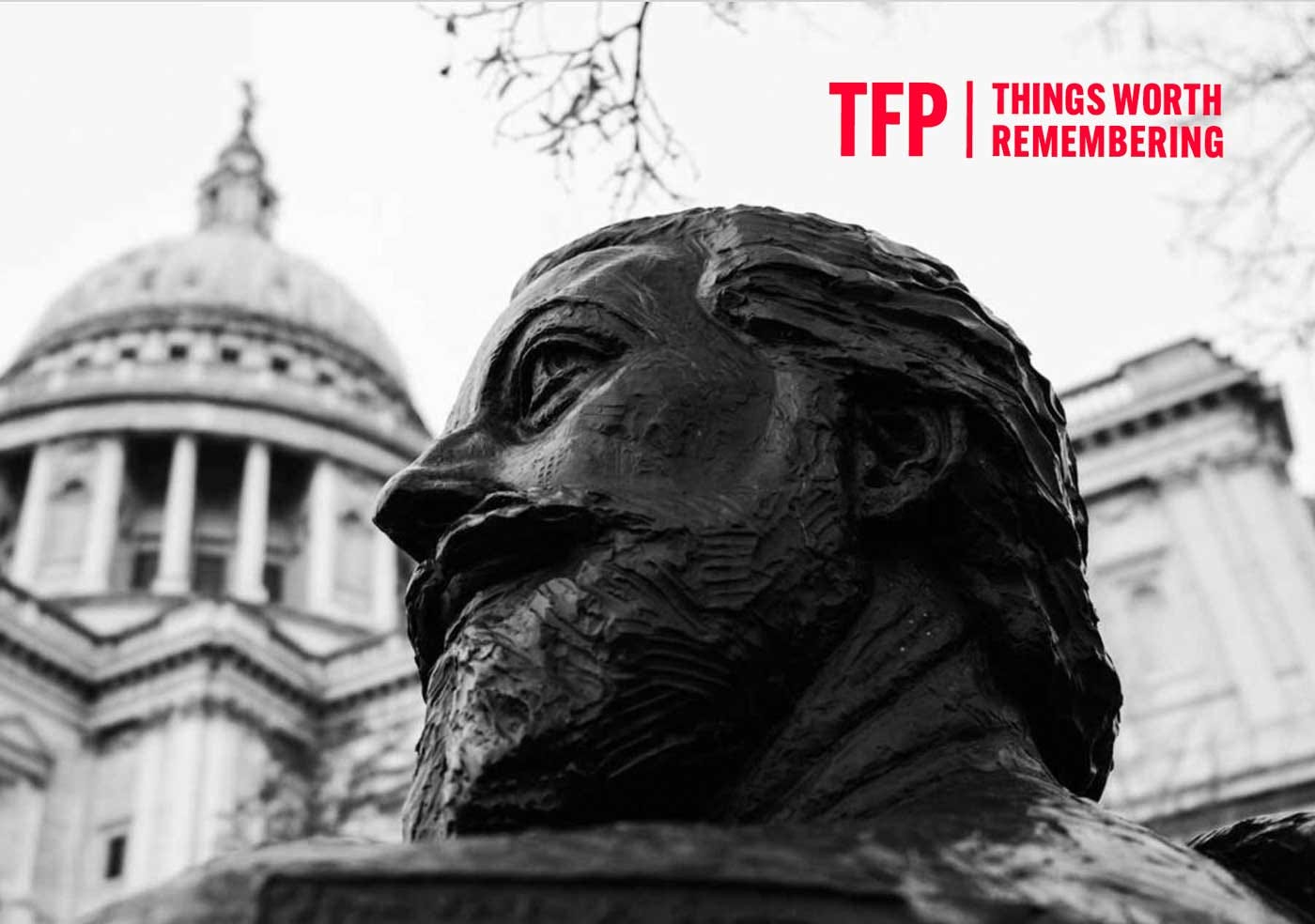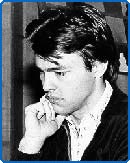(298) The Relic. Annas, Anns and Annes. The origin of The Seven Deadly Sins. The Resurrection!?
On the evening of March 13th 2024, Raymond Keene sent to me (and also independently, to my wife) this (quite unsolicited) poem in an e mail
The RelicBY JOHN DONNE
When my grave is broke up again
Some second guest to entertain,
(For graves have learn'd that woman head,
To be to more than one a bed)
And he that digs it, spies
A bracelet of bright hair about the bone,
Will he not let'us alone,
And think that there a loving couple lies,
Who thought that this device might be some way
To make their souls, at the last busy day,
Meet at this grave, and make a little stay?
If this fall in a time, or land,
Where mis-devotion doth command,
Then he, that digs us up, will bring
Us to the bishop, and the king,
To make us relics; then
Thou shalt be a Mary Magdalen, and I
A something else thereby;
All women shall adore us, and some men;
And since at such time miracles are sought,
I would have that age by this paper taught
What miracles we harmless lovers wrought.
First, we lov'd well and faithfully,
Yet knew not what we lov'd, nor why;
Difference of sex no more we knew
Than our guardian angels do;
Coming and going, we
Perchance might kiss, but not between those meals;
Our hands ne'er touch'd the seals
Which nature, injur'd by late law, sets free;
These miracles we did, but now alas,
All measure, and all language, I should pass,
Should I tell what a miracle she was.
Which he immediately followed up with other e mails to explain how it was "Coincidence of the day" -
Ray
The programme LPO programme sheet: 13 Mar 2024 - The Seven Deadly Sins (Battersea Arts Centre) by London Philharmonic Orchestra - Issuu describes it thus -
´ Described as a "sung ballet", The Seven Deadly Sins was written by German-Jewish composer Kurt Weill, with a libretto by Bertolt Brecht...
The Seven Deadly Sins tells the story of Anna, who is sent by her exploitative family on a seven-year journey through seven different American cities to earn enough money for them to build a house. Anna is torn betwen the need to make money and her morals and as such has a split personality: ´Anna I´ represents her practical, cynical side and ´Anna II´ her passionate, idealistic side. Meanwhile, the family fills the role of a ´Greek chorus´, singing as one and providing a mocking commentary on the action.
Anna II tries to follow her heart, but everytime she is scolded by practical Anna I for committing one of the deadly sins (Sloth, Pride, Anger, Gluttony, Lust, Greed and Envy) , because each ´sin´ in some way gets in the way of the money making. In Memphis, Anna II must give up her ´Pride´ to satisfy her clients as a cabaret dancer and her ´Lust´ in Boston when she wants to share her earnings with the man she loves. It´s all timelessly satirical, ironising society´s willingness to sacrifice values for financial gain.´
And so I replied by explaining how his coincidence contributed to one of mine.
For, about five days previously, I had (at long last!) gotten around to amending Blog entry (108). Firstly by altering the title from The Parousia Novel (the title I had given it in my 2000 book, Coincidences) to its new heading, Living the Dream: A Coincidence Diary: (108) Novels about The Second Coming (james-plasketts-coincidence-diary.blogspot.com) and then adding the codicil of seven separate strands apropos Anna Durrant and Anne Cooper, because I thought they entwined themselves into a valid coincidence. A coincidence not wholly distinct from the context/headings of Entry (108).
However, I wasn´t sure whether my friend Martin Cooper´s sister was an Ann or an Anne. And even toyed with the notion of appending a bracketed (e) to her name to indicate that.
Then came Keene´s surprise e mail to each of us of a poem of which I had never even heard (although my wife had read it) with it´s reference to Mary Magdalen and an exhumation. And, some would say, to The Resurrection itself... The Truth About the Holy Grail | The Da Vinci Code (Tom Hanks, Ian McKellen) (youtube.com)
The Holy Blood and the Holy Grail - Wikipedia
Then the follow on of the split personality of Emilia Fox when portraying a girl in the film Bright Relic (a title stemming from Donne´s poem, The Relic) as she flits between Ann and Anne.
This coincidence nexus moved me to consult the Wiki Entry on Mary Magdalene - Wikipedia I was to learn that she herself was cited by Pope Gregory 1st as the very source of The Seven Deadly Sins -
´In Pope Gregory's interpretation, the seven demons expelled from Mary Magdalene by Jesus are transformed into the seven deadly sins of medieval Catholicism, leading Mary "to be condemned not only for lust, but for pride and covetousness as well." The aspect of the repentant sinner became almost equally significant as the disciple in her persona as depicted in Western art and religious literature, fitting well with the great importance of penitence in medieval theology. ´
... ... ...
Lastly, and after I had blogged all of the above, I received an e mail from The Free Press on March 31st 2024: Easter Sunday. (Earlier in March I had begun to follow The Free Press on Twitter where I had already for some time followed Douglas Murray. I had also been listening to Youtube pieces featuring him.) It was indeed such a clip on Twitter which had led me to follow The Free Press. I was aware that he styled himself as an Atheist.
I noted the theme of Murray´s piece... and also the name of John Donne´s wife.
Things Worth Remembering: The Resurrection of the Body and the Immortality of the Soul
Preacher-poet John Donne gave voice to his faith with a sermon on how God will raise the dead.
Welcome to Douglas Murray’s column, Things Worth Remembering, in which he presents great speeches from famous orators we should commit to heart. To listen to Douglas read and reflect on John Donne’s Sermon LXXXI, scroll to the end of this piece.
I wonder if there has ever been a bigger change in our collective way of thinking than in our transition from the age of faith to the age of doubt. Inevitably, it is on my mind this Easter.
Millions of people around the world believe in the literal resurrection, when God lifts His believers into heaven. I suppose untold numbers are unsure or doubtful about this, while keeping within the borders of faith. For myself, I can’t help looking back at the age of faith—or even certainty—with envy.
Last year, I wrote in this space about the great English poet John Donne. He was perhaps the greatest of the “metaphysical” poets, a man whose work was laced with a raciness and a realness that, for some, lay in contradiction with his position as a clergyman and dean of St Paul’s Cathedral in London.
Personally, I don’t see any contradiction. He was a person able to appreciate and understand all of humankind—nodding to it even when he didn’t embrace it. As well as the joys of the body, he was intensely interested in its dissolution and destruction.
But then he lived in a time when death stalked life more brutally and obviously than it does today. He and his wife Anne lost three of their children before they had all reached their tenth birthdays. Another two of their children were stillborn. Donne, meanwhile, was often ill, and in one of his illnesses he wrote to a friend that:...




Comments